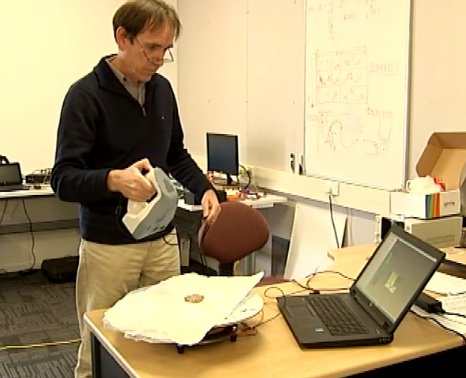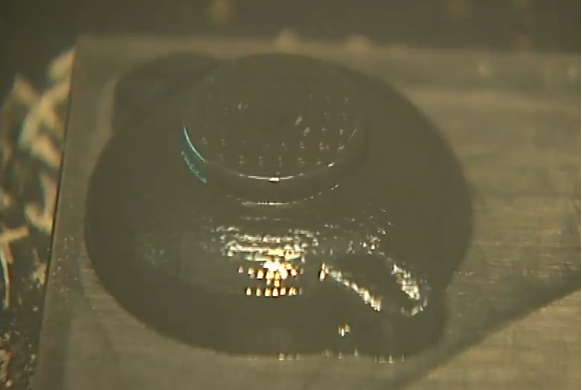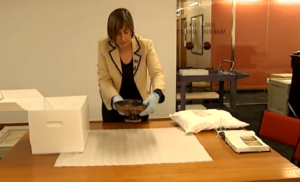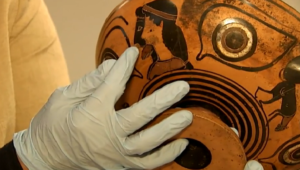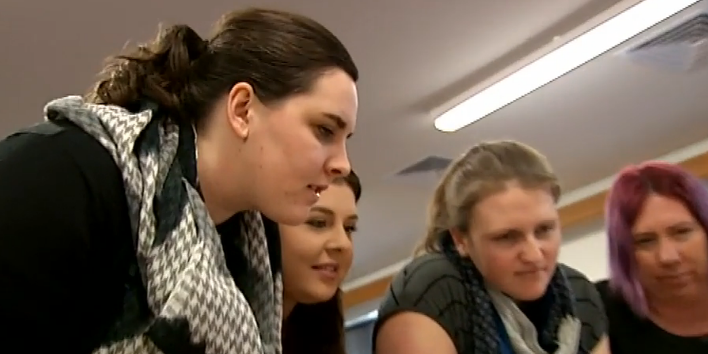Classics Students at University of Canterbury Learn More about Ancient Rome through Examining 3D Printed Replicas
 3D printing has begun to play a much larger role in education. While a priority nearly since the technology hit the mainstream, we now very commonly see entire labs popping up in schools all over the world including the hardware, software, networking and organizational platforms—as well as hordes of enthusiastic students just waiting for their turn. But education with 3D printing certainly takes place on many levels, and one instance that seems to be growing in momentum is that of 3D printing replicas of artifacts so that they can be studied and handled at will—without damaging the originals—a practice sort of reminiscent of wearing paste jewelry while the real gems sit in a safe.
3D printing has begun to play a much larger role in education. While a priority nearly since the technology hit the mainstream, we now very commonly see entire labs popping up in schools all over the world including the hardware, software, networking and organizational platforms—as well as hordes of enthusiastic students just waiting for their turn. But education with 3D printing certainly takes place on many levels, and one instance that seems to be growing in momentum is that of 3D printing replicas of artifacts so that they can be studied and handled at will—without damaging the originals—a practice sort of reminiscent of wearing paste jewelry while the real gems sit in a safe.
Currently, we see everyone from students to researchers enjoying this type of education, whether intensely studying the 3D printed human bones of a newly discovered Homo species to that of students helping to reconstruct an ancient skeleton, filling in the pieces with 3D printed mammoth bones. The key of course begins at the 3D scanner, where originals are scanned and then uploaded as files to one of the repositories we’ve reported on such as MorphoSource, or if bones are missing altogether, similar ones are scanned and used. Once 3D printed, users are looking at detailed, high-resolution replicas—and should something happen to one? That’s right—they just print another—on their own time. And while this may be a convenient new way of studying artifacts, certainly full of common sense, let’s not forget how incredibly exciting this is for those getting the chance to learn.
At the University of Canterbury, researchers have scanned rare artifacts and 3D printed them for students studying the classics. Able to hold and study the replicas during class, students are able to get a close-up look at amazing antiquities most would never in their lives have a chance to see ‘up close.’ All stemming from the Logie Collection owned by the University, those in class are able to see true relics in 3D print, to include items such as Babylonian cuneiform tablets, Roman cups, vases and more. They can even imagine themselves in the place of Romans as they hold and use the objects.
“They just light up when they are getting to handle the objects, even if they are replicas and not the originals,” says collection co-curator Terri Elder.
“Students that have interacted with the real objects, and the replica objects, tend to recall the information better and they tend to recall it for longer as well.”
Elder maintains that this is also a great way to make sure there is a backup for artifacts that are going to deteriorate over time no matter what they do, like a cuneiform tablet carrying writing that is in their possession. Senior mechanical engineering lecturer Don Clucas has been in charge of 3D printing all of the replicas so far.
Classics student Kate Tinkler find this all to be a really good idea:
“It’s so different to looking at something through the glass. You can feel the size and the weight of it and all those tiny details,” she says.
“There’s never anything you can hold without gloves because half of the stuff is so fragile, you don’t want the oil from your fingertips eroding into the paintwork.”
- Terri Elder carefully unwrapping originals for class.
This new process that so many universities and museums are becoming acquainted with reaches beyond the classroom and their campus however. With the ability to share files with the click of an button, these replicas can consequently be shared with other institutions that might even be overseas, eliminating freight costs and any potential way to get artifacts back on time. And even better: the files can be made available to the general public, allowing them to 3D print their choice of artifacts.
The university also has plans to start 3D printing many of these replicas in souvenir form, allowing student groups to take their own replicas home with them after an inspiring visit to see the collection. Discuss further in the University 3D Printed Replicas forum over at 3DPB.com.
[Source: Newshub]Subscribe to Our Email Newsletter
Stay up-to-date on all the latest news from the 3D printing industry and receive information and offers from third party vendors.
You May Also Like
3D Printing Unpeeled: New Arkema Material for HP, Saddle and Macro MEMS
A new Arkema material for MJF is said to reduce costs per part by up to 25% and have an 85% reusability ratio. HP 3D HR PA 12 S has been...
3D Printing News Briefs, January 20, 2024: FDM, LPBF, Underwater 3D Printer, Racing, & More
We’re starting off with a process certification in today’s 3D Printing News Briefs, and then moving on to research about solute trapping, laser powder bed fusion, and then moving on...
3D Printing Webinar and Event Roundup: December 3, 2023
We’ve got plenty of events and webinars coming up for you this week! Quickparts is having a Manufacturing Roadshow, America Makes is holding a Member Town Hall, Stratafest makes two...
Formnext 2023 Day Three: Slam Dunk
I’m high—high on trade show. I’ve met numerous new faces and reconnected with old friends, creating an absolutely wonderful atmosphere. The excitement is palpable over several emerging developments. The high...


